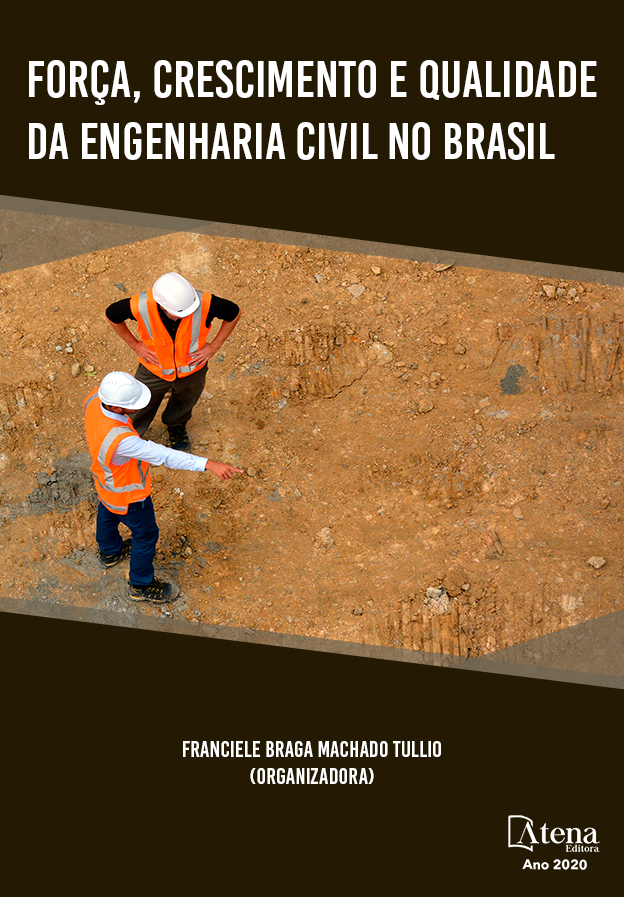
ESTUDO DA FORMA DO AGREGADO GRAÚDO E SUA INFLUÊNCIA NO MÓDULO DE ELASTICIDADE DO CONCRETO
A porosidade do concreto está intimamente relacionada com a durabilidade e desempenho das edificações. O estudo mais aprofundado dos fatores relacionados à quantidade de vazios presentes no concreto endurecido se faz necessário para uma melhor compreensão da qualidade e durabilidade das edificações. O presente trabalho relata um estudo sobre forma e classificação do agregado graúdo para concreto, e sua influência sobre o módulo de deformação do concreto.
No desenvolvimento da metodologia da pesquisa, foram descritas a caracterização da forma, através de parâmetros estabelecidos por normas nacionais e internacionais, além de outras referências que estabelecem diretrizes para a classificação da forma do agregado graúdo britado. Com base nestas referências, estabeleceram-se critérios e parâmetros para determinar a forma do agregado graúdo britado em (quatro) categorias: forma cúbica, forma alongada, forma lamelar e forma alongada-lamelar. Posteriormente, houve a produção dos concretos para cada forma do agregado, e apresentação das análises e resultados dos corpos de provas submetidos aos ensaios do módulo de elasticidade do concreto aos 28 dias.
Analisando-se os resultados dos ensaios, observa-se que quanto maior a relação a/c, maior será seu módulo de elasticidade (GPa) e menor sua resistência (MPa). Já para os concretos com menor a/c, estes apresentaram maiores valores na resistência à compressão e menores deformações. Podemos atribuir estes resultados a uma micro estrutura mais compacta e diâmetros de poros menores, o que acarreta em menor deformação do concreto.
Os concretos produzidos com agregados irregulares proporcionam maiores índices de vazios, ocasionado pelo aumento da a/c, e, esses vazios permitem uma maior elasticidade do concreto. A rede de poros funciona como concentrador de tensão, permitindo que o concreto trabalhe, quando sujeito a esforços, porém, os torna mais frágeis rompendo a baixa resistência.
ESTUDO DA FORMA DO AGREGADO GRAÚDO E SUA INFLUÊNCIA NO MÓDULO DE ELASTICIDADE DO CONCRETO
-
DOI: 10.22533/at.ed.8732021098
-
Palavras-chave: Agregado, Forma, Influência, Elasticidade, Concreto.
-
Keywords: Aggregate, Form, Influence, Elasticity, Concrete.
-
Abstract:
The porosity of concrete is closely related to the durability and performance of buildings. The further study of the factors related to the amount of voids present in the hardened concrete is necessary for a better understanding of the quality and durability of the buildings. The present work reports a study on the form and classification of coarse aggregate for concrete, and its influence on the concrete deformation module.
In the development of the research methodology, the characterization of the form was described, through parameters established by national and international standards, in addition to other references that establish guidelines for the classification of the form of coarse crushed aggregate. Based on these references, criteria and parameters were established to determine the shape of the coarse crushed aggregate in (four) categories: cubic shape, elongated shape, lamellar shape and elongated-lamellar shape. Subsequently, there was the production of concretes for each form of the aggregate, and presentation of the analysis and results of the specimens submitted to the tests of the modulus of elasticity of the concrete at 28 days.
Analyzing the results of the tests, it is observed that the higher the a / c ratio, the greater its modulus of elasticity (GPa) and the lower its resistance (MPa). For concretes with lower a / c, these showed higher values for compressive strength and lower deformations. We can attribute these results to a more compact microstructure and smaller pore diameters, which results in less concrete deformation.
The concretes produced with irregular aggregates provide higher voids indexes, caused by the increase of a / c, and these voids allow a greater elasticity of the concrete. The pore network works as a stress concentrator, allowing the concrete to work, when subjected to efforts, however, it makes them more fragile by breaking the low resistance.
-
Número de páginas: 18
- André Luiz Bortolacci Geyer
- Guilherme de Sousa Fernandes
- Danillo de Almeida e Silva


